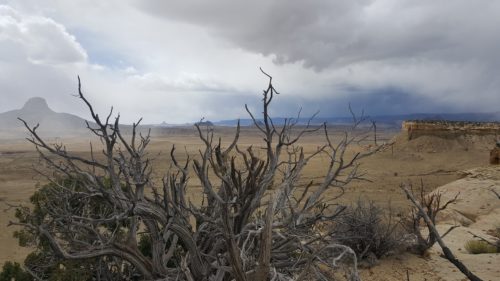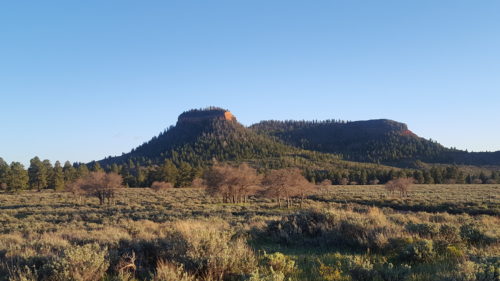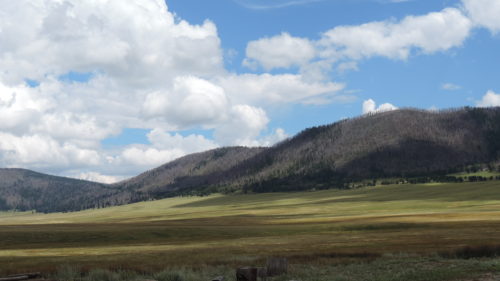There are many legislative proposals scheduled in committee next week that you should engage your legislators on! Please contact all members of the Senate Conservation Committee and House Energy, Environment and Natural Resources Committee to state your support or opposition on the proposed legislation listed below. If you are a constituent of one of the members in either committee, please point it out to them. If you have friends or family who are constituents of legislators in these committees, please pass this on to them!
Not sure who your legislators are? Find out who they are and remember, these folks work for you and represent you in the New Mexico legislative arena!
If you plan on showing up in person to support or oppose these bills, plan on getting there early as the committee rooms will more than likely be packed.
Heard in House State Government, Indian and Veterans’ Affairs Committee
MATTHEW MCQUEEN, CHAIRMAN
Tuesday, February 21 – 8:00 am Room 315
GOOD
HB 254 “Game Commission Legislative Appointments”
Rep. Matthew McQueen, Sponsor
The New Mexico Wildlife Federation’s founders campaigned to create the State Game Commission a century ago, and it has supported the Commission’s evolution ever since. It’s time for the next step in that evolution.
This legislation:
- Sets the stage for long-term, science-based consistency in wildlife management
- Assures that diverse interest groups bring their expertise to the commission
Key components of the bill:
- Strength – The Governor and Legislature vet and appoint the most qualified candidates, in line with the successful revamp of the State Investment Council.
- Independence – Members cannot be arbitrarily dismissed
- Stability – Staggered terms sustain a consistent core of experienced commissioners
- Expertise – Qualified candidates represent sportsmen, conservationists, agriculture, wildlife science and the public at large
WHY NOW: To meet new challenges and sustain a billion-dollar value
- “In 2011, state residents and nonresidents spent $937 million on wildlife recreation in New Mexico.” USFWS 2011 National Survey of Fishing, Hunting, and Wildlife-Associated Recreation.
- New Mexico’s population size and makeup, exciting advances in wildlife science, shifting attitudes toward wildlife, competing interests, a tremendous aesthetic and economic resource worth nearly $1 billion annually – all call for a stable, qualified, diverse, and independent Commission to lead us into a new century of management.
WHAT DOESN’T CHANGE: The Commission remains at seven members and retains all the powers and duties assigned to it under current law.
BAD
SENATOR JOSEPH CERVANTES, CHAIRMAN
Tuesday, 8:00 am, Room 311
Only HB 446 will be heard in committee this week.
HB 446/HJM 17 – “Wild Horses in Statute,” Rep. Joanne Ferrary; and HJM 17, “Protection of Wild Horses,” also sponsored by Rep. Ferrary and co-sponsored by Reps. Christine Trujillo, Elizabeth Thompson and Patricia Roybal Caballero.
- Horses aren’t wildlife – But this legislation says Game and Fish should manage them.
- Both pieces of legislation misguidedly shift “wild” horse management to the Department of Game and Fish. Whether “wild” by statutory definition, feral, or unclaimed strays, horses are not wildlife. They are livestock – the product of thousands of years of domestication and selective breeding by humans. Game and Fish has no expertise, no resources and no business in managing horses. As seems to be the theme in this session, this legislation would give NMDGF big new responsibilities with no funding to go with them. Guess whose hunting and fish license fees would pay the bill? Expect strong objections not only from sportsmen’s groups and the agricultural community, but even from wildlife advocacy groups.
Land Commissioner Review Of National Monuments, Sponsor, Sen. Stuart Engle
- We’ve nicknamed this proposed legislation “Aubrey Dunn’s Bundy Bill” because the language in the proposed legislation so closely mirrors radical militant anti-public lands extremist Ammon Bundy’s misinformed talking points during the illegal and offensive 2016 Malheur Wildlife Refuge Occupation. The “cookie cutter” legislation also looks and feels as though the American Legislative Exchange Council and Utah state and federal elected officials have their fingerprints all over it.
- The pro-transfer interpretation of the Constitution, which Commissioner Dunn and the Bundys subscribe to, is flight of fancy founded mostly on the Lost Cause myth propagated by the side that lost the Civil War.
- This bill falsely interprets both Articles 1 and 2 of the U.S. Constitution, and seeks to limit the powers of the President of the United States of America
- This interpretation of the Constitution not only denies long-settled interpretation of federal authority over public lands, but even seems to deny the principle of judicial review of the Constitution.
- Since 1840, the Supreme Court has consistently ruled that the federal government has nearly limitless authority to own and manage public lands under the Property Clause.
- The Enclave Clause of the Constitution is a favorite of land transfer militants, who argue that the Clause limits the amount of land the federal government may own to the ten square miles of Washington D.C. But the Enclave Clause is really more about governmental jurisdiction than ownership. The federal government can have an enclave in which much of the territory is titled to private parties—as is true of Washington, D.C. It’s just that in an enclave, federal rather than state jurisdiction is supreme.
- The Antiquities Act gives the President of the United States the authority to, by presidential proclamation, create national monuments from federal lands to protect significant natural, cultural, or scientific features.
- The United States Supreme Court has repeatedly upheld presidential proclamations under the Antiquities Act, ruling each time that the Act gives the president nearly unfettered discretion as to the nature of the object to be protected and the size of the area reserved.
SB 481 – Endangered Species Coordination, Sponsor Sen. William F. Burt
- Contrary to federal law, the bill assumes that the US Fish and Wildlife Service has to take into account social and economic impact of a listing decision. The ESA lists only five criteria: all of which are biological impacts.
- The ESA requires the use of “best available science” not “best science.”
- The department does not have authority over endangered plants; that is an EMNRD function.
- The requirement for the director to conduct an economic study to assess the economic impact of a species being listed or potentially so is a huge undertaking for each species.
- Recovery of species has never been tied to economic growth because Section 4 of the ESA prevents such consideration.
- As written Section 5 mandates a number of committees and research to completed on top of an audit to be conducted regarding the implementation and a peer review of the work. That section alone is easily $250K-400K per species; Section 5 alone is an additional $750.0 – $1M annually; that is if certain groups don’t sue the USFWS for additional listing decisions.
- Comprehensive studies as described would be overwhelming.
- The appointment of an advisory committee to oversee the processes as outlined in the proposed Act is expensive and is in direct conflict with the authority of the State Game Commission.
- The department does not have the capacity, budget or funding to make such working groups function properly and as intended.
- The resources needed to make this Act happen are tremendous. There is no identified funding mechanism; the game protection fund couldn’t support this work.
- Attempts to silence DGF scientists, and stop the flow of valuable information on endangered species from reaching the public
*SB 286 “NM Wildlife Protection & Public Safety Act,” Sen. Pete Campos
*SB 286 is still in play and being amended. As it was written last week here are our concerns with it.
- SB 286 would ban use of traps and poisons on public lands, defined as any land that is not private property or belonging to an Indian nation, tribe or pueblo.
- NMWF supports regulated trapping
- The New Mexico Wildlife Federation believes that regulated trapping is a legitimate, consumptive use of a renewable wildlife resource, a necessary component of livestock protection and a vital wildlife management tool. NMWF therefore respectfully opposes SB 286 at its most basic level.
POSSIBLE ALTERNATIVES TO BAN
- NMWF has repeatedly recommended that stakeholders, the State Game Commission and Game and Fish Department review and amend trapping rules to reduce conflicts. A few of many potential areas to explore: mandatory trapper methodology and ethics courses for all license holders; increased setbacks of traps from public trails, roads and facilities; closing high-conflict areas to trapping; setting quotas or bag limits on bobcats; limiting trapping to residents only; severe fines for unlicensed trapping and/or setting traps in closed areas or without proper trap identification as mandated by current law.
SOME OF THE TECHNICAL FAULTS WITHIN SB 286 (as introduced):
- Section 3 B (5), p. 5: SB 286 limits wildlife managers’ use of traps to protect “threatened or endangered” species only. That restriction must be removed: Desert bighorn sheep populations are no longer endangered – but only because continued, targeted removal of predating cougars allowed sheep populations to increase, a program that is still necessary. Should the agency discontinue the program until cougar predation again reduces the sheep to endangered status, then resume?
- Section 2 A & B, p. 1: Definitions of prohibited traps now include common household glue, mouse and rat traps, cage, box, corral, colony, net and suitcase-type live beaver traps – all of which were specifically excluded in similar legislation in 2013 (HB 579) and 2015 (HB 426).
- Section 3 A (2), (3), (6), (7), (8). These sections sharply limit individuals’ and government entities’ flexibility in dealing with predatory, depredating or nuisance wildlife or feral domestic animals. Each prohibits traps or poisons unless they are “the only feasible way” to accomplish the purpose. “Only feasible way” is not defined; these sections invite costly litigation against agencies that may use lethal methods when “feasible,” but less effective, more expensive methods are available.
- Section 2 I, p. 3. Definition of ‘public lands’ sweeps in not only federal Forest Service & BLM lands, but all federal properties, including military & Indian trust lands; state trust, game commission, parks, the Capitol complex & other state buildings; universities; municipal properties, including airports; county and school properties.
SB 267 – Senate Bill 267, “Protection of Fur-Bearing Animals and Coyotes” Sen. Jeff Steinborn, Sponsor –
- NMWF respectfully opposes SB 267.
- SB 267 would add coyotes and skunks to the list of protected furbearers, which currently includes bobcats, raccoons, foxes, beavers and other furbearers.
The bill:
- Would automatically impose major new responsibilities, expenses and liabilities on the Department of Game and Fish
- Does not provide adequate and permanent/reliable funding to meet those responsibilities and liabilities
- Most significantly, the Department would be required to address coyote predation. Coyotes are ubiquitous throughout New Mexico and the state’s foremost predator on lambs, sheep, goats and household pets.
- The agricultural community’s demand for coyote control will not diminish, nor will coyote advocates’ demands for an end to trapping, aerial gunning, poisons and other controls.
- If responsible for coyotes, the Department of Game and Fish would be a likely target of litigation now aimed at the federal government and Wildlife Services, which currently conducts governmental coyote control.
- The conflicts, liabilities and potential litigation over coyotes would almost certainly surpass current battles over elk populations, damages to private property, competition with livestock, and hunting management strategies.
- And, nothing to laugh about: The Game Department would also have to address the very numerous complaints about nuisance skunks. The demands would be real, and really expensive.



